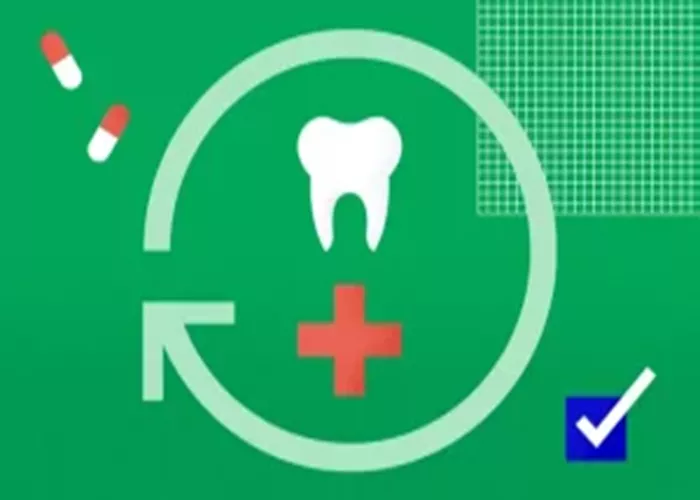Gum erosion, also known as gum recession, is a dental condition that affects many individuals. It occurs when the gum tissue that surrounds the teeth wears away, exposing more of the tooth or the tooth root. This condition can lead to various dental issues, including sensitivity, increased risk of cavities, and aesthetic concerns. Many people wonder if eroded gums can grow back and what steps they can take to promote gum health. This article will explore the causes of gum erosion, treatment options, and whether gum tissue can regenerate.
Understanding Gum Erosion
What is Gum Erosion?
Gum erosion is the process in which the gum tissue recedes from the tooth surface, resulting in a longer appearance of the teeth. This condition can occur in one tooth or multiple teeth and can affect individuals of all ages. While gum erosion is a common issue, it is often underestimated and can lead to significant dental problems if left untreated.
Causes of Gum Erosion
Several factors contribute to gum erosion, including:
Periodontal Disease: This is one of the most common causes of gum recession. Periodontal disease is an infection of the gums that can damage the supporting structures of the teeth, leading to gum erosion.
Aggressive Brushing: Brushing your teeth too hard or using a hard-bristled toothbrush can wear down the gum tissue.
Poor Oral Hygiene: Inadequate oral care can lead to plaque buildup, which can irritate the gums and contribute to gum disease.
Genetics: Some individuals may be genetically predisposed to gum recession.
Hormonal Changes: Hormonal fluctuations during puberty, menstruation, pregnancy, or menopause can make gums more sensitive and prone to recession.
Tobacco Use: Smoking and other forms of tobacco can impair blood flow to the gums, leading to gum disease and recession.
Misaligned Teeth: Teeth that are not properly aligned can put excessive pressure on the gums, leading to erosion.
Bruxism: Grinding or clenching teeth can cause trauma to the gums and result in recession.
Symptoms of Gum Erosion
Recognizing the symptoms of gum erosion is essential for early intervention. Common signs include:
Longer Teeth: An increased appearance of tooth length due to gum tissue loss.
Sensitivity: Increased sensitivity to hot, cold, or sweet foods and beverages.
Visible Roots: Exposed tooth roots that may appear darker than the rest of the tooth.
Bleeding Gums: Gums that bleed during brushing or flossing.
Bad Breath: Persistent bad breath can indicate gum disease.
Can Eroded Gums Grow Back?
The Nature of Gum Tissue
Unlike some tissues in the body, gum tissue does not regenerate in the same way. Once gum tissue has eroded, it does not grow back on its own. However, there are treatments available that can help restore gum health and improve the appearance of the gums.
Treatment Options for Gum Erosion
While eroded gums cannot grow back naturally, several treatment options can help manage the condition and improve gum health:
1. Improving Oral Hygiene
One of the most effective ways to prevent further gum erosion is to maintain good oral hygiene. This includes:
Brushing Twice Daily: Use a soft-bristled toothbrush and fluoride toothpaste to brush your teeth gently.
Flossing Daily: Flossing helps remove plaque and food particles from between the teeth and along the gum line.
Regular Dental Checkups: Visiting the dentist regularly for cleanings and checkups is essential for maintaining gum health.
2. Scaling and Root Planing
For individuals with gum disease, scaling and root planing may be recommended. This deep cleaning procedure removes plaque and tartar from below the gum line, helping to reduce inflammation and promote healing.
3. Gum Grafting
In cases of significant gum recession, gum grafting may be an option. This surgical procedure involves taking tissue from another part of the mouth (or using donor tissue) and attaching it to the area of gum recession. This can help restore gum tissue and improve the appearance of the gums.
4. Pinhole Surgical Technique
This is a less invasive surgical option for treating gum recession. The pinhole surgical technique involves making a small hole in the gum tissue and using specialized instruments to reposition the gum over the exposed tooth roots. This technique can be effective in restoring gum tissue without the need for grafting.
5. Medications
In some cases, your dentist may prescribe medications to help manage gum disease and promote healing. These may include topical antibiotics or antimicrobial mouth rinses.
Lifestyle Changes
Making certain lifestyle changes can also help improve gum health and prevent further erosion:
Quit Smoking: Stopping tobacco use can significantly improve gum health and reduce the risk of gum disease.
Eat a Balanced Diet: A diet rich in vitamins and minerals supports overall oral health. Foods high in vitamin C, such as fruits and vegetables, can be particularly beneficial for gum health.
Stay Hydrated: Drinking plenty of water helps maintain saliva flow, which is essential for oral health.
Monitoring Your Gum Health
Regular Dental Visits
Regular dental checkups are crucial for monitoring gum health. Your dentist can assess the condition of your gums and recommend appropriate treatments. Early intervention is key to preventing further erosion and complications.
Self-Examination
Performing self-examinations of your gums can help you identify early signs of erosion. Look for changes in gum color, swelling, or bleeding. If you notice any concerning symptoms, contact your dentist promptly.
Conclusion
Eroded gums cannot grow back on their own, but there are effective treatments available to manage the condition and restore gum health. Understanding the causes of gum erosion and taking proactive steps to maintain oral hygiene are essential for preventing further damage. If you experience symptoms of gum erosion, consult your dentist for a thorough evaluation and personalized treatment plan. With the right care and intervention, you can maintain healthy gums and a beautiful smile. Remember that prevention is always better than treatment, so prioritize your oral health to avoid gum erosion in the first place.
Related topics:

